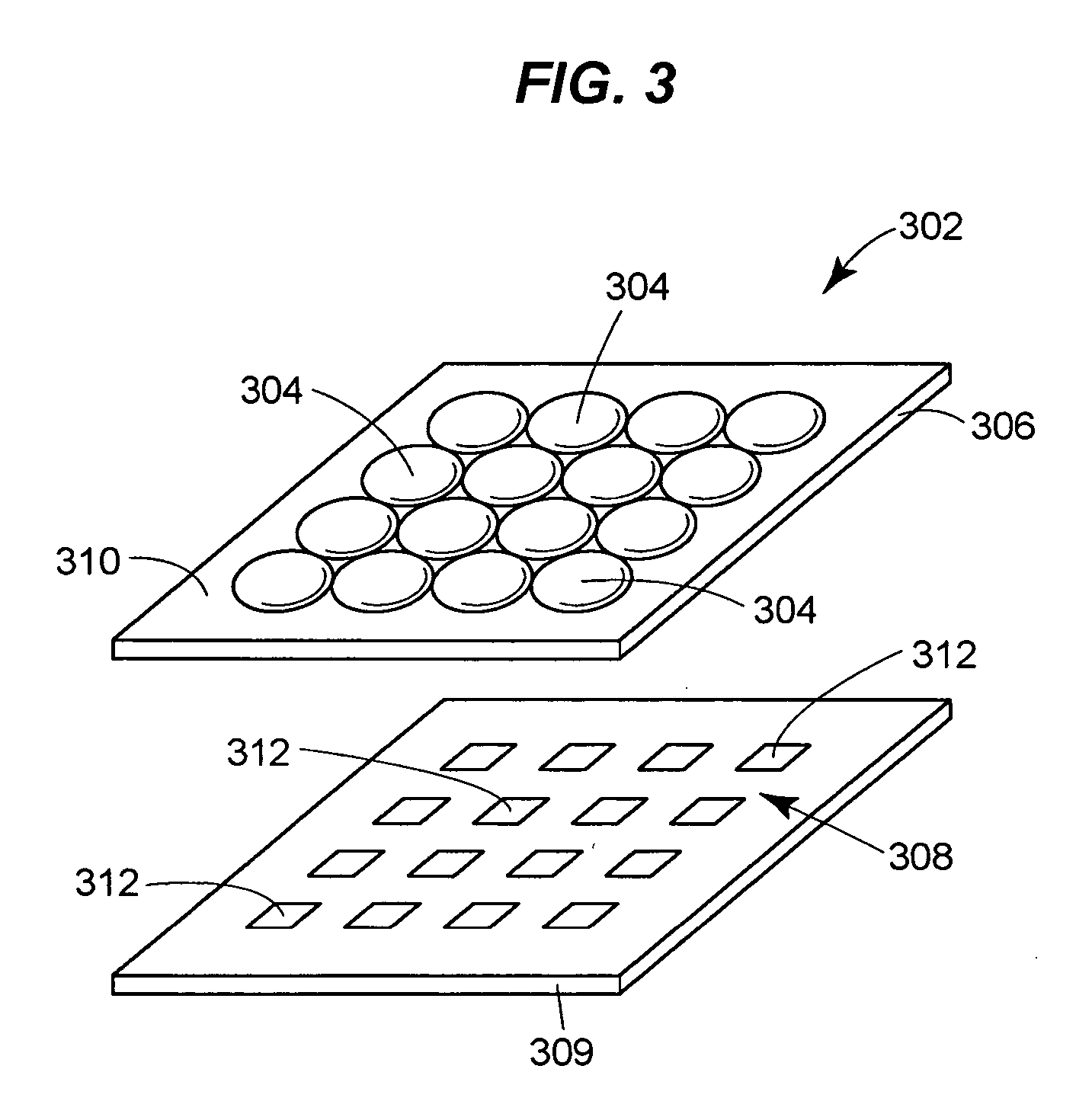Lenslet/detector array assembly for high data rate optical communications
a technology of optical communication and detector array, applied in the field of optical communication, can solve the problems of poor optical quality receiver, limited effectiveness of such devices, and original laser beam expansion and distortion, and achieve the effects of high data rate, low circuit capacitance, and high bandwidth
- Summary
- Abstract
- Description
- Claims
- Application Information
AI Technical Summary
Benefits of technology
Problems solved by technology
Method used
Image
Examples
Embodiment Construction
[0020] To detect optical radiation like laser signals, an optical device may have a focal plane assembly (FPA) able to collect the optical energy and direct that energy to an optoelectronic converter, such as a photodetector array. The electrical signals from the photodetector array may then be applied to amplifiers and analog or digital summing elements to produce a rendition of the original laser signal captured by the FPA. FIGS. 1 and 2 illustrate two different configurations of optical devices that may be used in such high data rate optical communication systems.
[0021]FIG. 1 illustrates an optical device 100 that may be used to collect and convert optical signals having data rates of approximately 1 Gbit / s or higher, and in some examples approximately 10 Gbit / s or higher. The device 100 may be used to collect optical energy having a frequency of typically between approximately 1 GHz and 50 GHz, for example.
[0022] The device 100 includes an FPA in the form of a lenslet array 10...
PUM
 Login to View More
Login to View More Abstract
Description
Claims
Application Information
 Login to View More
Login to View More - R&D
- Intellectual Property
- Life Sciences
- Materials
- Tech Scout
- Unparalleled Data Quality
- Higher Quality Content
- 60% Fewer Hallucinations
Browse by: Latest US Patents, China's latest patents, Technical Efficacy Thesaurus, Application Domain, Technology Topic, Popular Technical Reports.
© 2025 PatSnap. All rights reserved.Legal|Privacy policy|Modern Slavery Act Transparency Statement|Sitemap|About US| Contact US: help@patsnap.com



